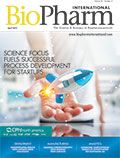Keeping the Patient and Public Health in Focus
Promoting patient compliance with drug regimens extends beyond the formulation laboratory.
The seasonal flu was widespread in my geographic area during the 2018–2019 winter, and despite receiving a flu shot five months ago, I developed symptoms. The Centers for Disease Control (CDC) estimates that 31–36 million people experienced seasonal flu illnesses in the 2018–2019 flu season, prompting an estimated 16.8 million doctor visits, a half million hospitalizations, and up to 46,800 deaths. Based on CDC estimates, the 2018–2019 season was the second most severe in the number of illnesses and doctor visits, fifth in hospitalizations, and fourth in deaths, when compared with other flu seasons dating back to 2010 (1).
An estimated 169.1 million doses of flu vaccine were distributed in the 2018–2019 season, an increase of almost 9% over the previous season (2). I was fortunate; my symptoms were mild, and I stayed home from work for a week to prevent the spread of the illness. Still, I was an unhappy patient. Sorting through the many options of over-the-counter (OTC) medicines was dizzying. Dosing instructions were confusing. And the prescription and OTC medicines I took literally left a bad taste in my mouth.
While my illness was routine and I soon recovered, the implications for patients with serious medical conditions who do not adhere to complex dosing regimens can be health- or life-threatening. Therapies that require painful injections, administration by trained medical professionals, or have adverse side effects are just a few challenges to effective dosing of drugs.
Patient-centric drug design-bringing the patient’s experience to the forefront of drug formulation strategies-is an emerging focus for drug companies. Development strategies should include more than just studying the biopharmaceutical and physicochemical characteristics of a drug molecule, experts say. Understanding the patient’s physical and dosing needs at early stages of development will be crucial. I will be moderating a panel discussion on patient-centric drug design at CPhI North America in Chicago on April 30, 2019. Visit www.cphinorthamerica.com for more information.
Measures beyond medicine
Practical measures such as isolation of an infected person and vaccinations can help contain disease outbreaks. However, many people choose to not get vaccinated against common diseases due to both medical and non-medical concerns. Measles, a disease that was declared eliminated from the United States in 2000, is making a comeback, with a spike in reported cases in 2019.
Through mid-March 2019, the CDC reported more than 300 confirmed cases of the disease in 15 states, up from 17 cases in 2018. The outbreak was attributed to international travelers bringing the disease to the United States as well as clusters of unvaccinated people in certain communities.
An outbreak in Rockland County, New York prompted county officials to declare a state of emergency that barred anyone under age 18 who was not vaccinated against the measles from public places for 30 days or until they receive a vaccination (3). Officials told media outlets the measures were taken to get the public’s attention and encourage more vaccinations. Backlash against the emergency order, however, illustrated that opinions about a patient’s right to refuse treatment are strong and present challenges for public health officials, adding another layer of complexity to promoting patient adherence to drug regimens.
References
1. CDC, Disease Burden of Influenza, accessed March 29, 2019.
2. CDC, Measles Cases and Outbreaks, accessed March 29, 2019.
3. Rockland County, Press Release, March 26, 2019.
Article Details
BioPharm International
Vol. 32, No. 4
April 2019
Page: 6
Citation
When referring to this article, please cite it as R. Peters, “Keeping the Patient and Public Health in Focus," BioPharm International 32 (4) 2019.
